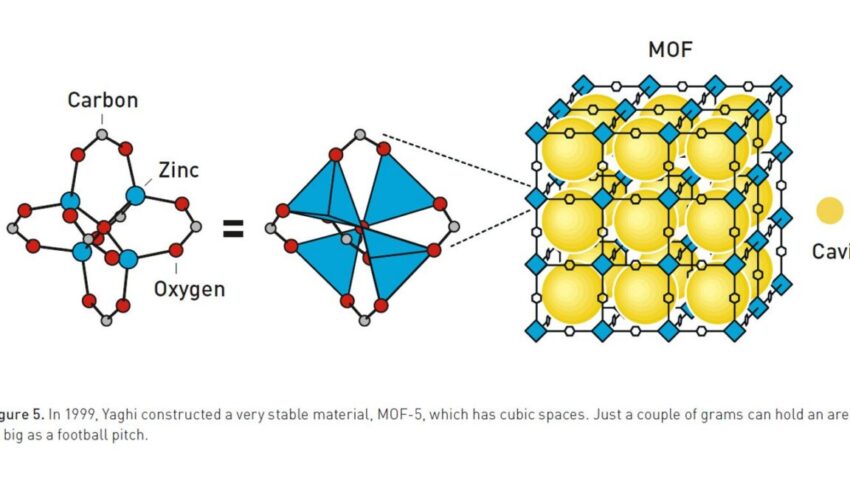
chemistry nobel prize awarded for building ordered The 2025 Nobel Prize in Chemistry has been awarded to three researchers for their groundbreaking work in developing metal-organic frameworks (MOFs), which represent a significant advancement in the field of polymer chemistry.
chemistry nobel prize awarded for building ordered
The Evolution of Polymers
Polymers are ubiquitous in our daily lives, forming the backbone of countless materials, from plastics to textiles. Traditionally, these polymers are characterized by their disordered structures, where long chains of atoms are tangled together in a chaotic manner. This disordered arrangement limits the functionality and efficiency of the materials produced. However, since the early 1990s, chemists have made significant strides in developing techniques to create polymers with precisely defined structures, leading to the advent of metal-organic frameworks.
Understanding Metal-Organic Frameworks
Metal-organic frameworks are a class of compounds consisting of metal ions coordinated to organic ligands, forming a porous structure. This unique arrangement allows MOFs to exhibit distinct chemical properties, such as:
- Large Pores: The extensive pore structure of MOFs enables them to filter or store gases effectively, making them valuable in applications like carbon capture and hydrogen storage.
- Catalytic Centers: The design of MOFs can incorporate catalytic centers, enhancing their ability to facilitate chemical reactions.
- Selective Adsorption: The tunable nature of MOFs allows for selective adsorption of specific molecules, which is crucial in various separation processes.
These properties have opened new avenues in fields such as gas storage, catalysis, and drug delivery, showcasing the versatility and potential of MOFs in addressing global challenges.
The Nobel Laureates
On Wednesday, the Nobel Prize Committee recognized the contributions of three prominent researchers in the development of MOFs: Richard Robson, Susumu Kitagawa, and Omar Yaghi. Each played a pivotal role in advancing the understanding and application of these innovative materials.
Richard Robson: The Pioneer
Richard Robson is credited with demonstrating the first metal-organic framework in the early 1990s. His groundbreaking work laid the foundation for the field, providing a framework for future research and development. Robson’s initial discoveries highlighted the potential of MOFs, sparking interest among chemists and researchers worldwide.
Susumu Kitagawa: Expanding Horizons
Following Robson’s pioneering work, Susumu Kitagawa made significant contributions to the field by exploring the structural diversity and functional capabilities of MOFs. Kitagawa’s research focused on the synthesis of various MOFs and their applications in gas storage and separation technologies. His work has been instrumental in demonstrating how MOFs can be tailored for specific functions, thereby enhancing their practical utility.
Omar Yaghi: The Innovator
Omar Yaghi is known for his innovative approaches to the design and synthesis of MOFs. He has been a driving force in expanding the scope of MOFs, exploring their potential in areas such as catalysis and drug delivery. Yaghi’s work has not only advanced the scientific understanding of these materials but has also led to practical applications that can address pressing global issues, such as climate change and energy storage.
Implications of the Nobel Prize
The recognition of Robson, Kitagawa, and Yaghi by the Nobel Prize Committee underscores the importance of their contributions to the field of chemistry. The award serves as a reminder of the transformative potential of scientific research and innovation. The development of MOFs has far-reaching implications, particularly in the context of sustainability and environmental protection.
Environmental Impact
One of the most pressing challenges facing humanity today is climate change. The ability to capture and store greenhouse gases, such as carbon dioxide, is crucial in mitigating the effects of global warming. MOFs, with their large surface areas and tunable pore sizes, offer a promising solution for carbon capture technologies. By effectively filtering out CO2 from industrial emissions, MOFs can play a vital role in reducing the overall carbon footprint.
Energy Storage and Efficiency
In addition to their applications in gas capture, MOFs are also being explored for their potential in energy storage. The ability to store hydrogen gas efficiently is critical for the development of clean energy technologies, such as fuel cells. MOFs can facilitate the storage of hydrogen at lower pressures, making them a safer and more efficient option compared to traditional methods. This advancement could accelerate the transition to renewable energy sources and reduce reliance on fossil fuels.
Challenges and Future Directions
Despite the significant advancements in the field of MOFs, challenges remain. The scalability of MOF production is a critical issue that researchers are currently addressing. While laboratory-scale synthesis has proven successful, translating these methods to industrial-scale production poses logistical and economic hurdles. Researchers are actively exploring new synthesis techniques and materials to overcome these challenges and make MOFs more accessible for widespread use.
Interdisciplinary Collaboration
The future of MOF research will likely require interdisciplinary collaboration among chemists, materials scientists, engineers, and environmental scientists. By working together, these experts can develop innovative solutions that leverage the unique properties of MOFs to address complex challenges in various fields. Collaborative efforts can lead to the discovery of new applications and enhance the efficiency of existing technologies.
Public Awareness and Education
As the potential of MOFs becomes more widely recognized, there is a growing need for public awareness and education regarding their applications and benefits. Engaging the public in discussions about the importance of sustainable materials and technologies can foster support for research initiatives and encourage investment in green technologies. Educational programs that highlight the significance of MOFs in addressing environmental challenges can inspire the next generation of scientists and innovators.
Conclusion
The awarding of the 2025 Nobel Prize in Chemistry to Richard Robson, Susumu Kitagawa, and Omar Yaghi marks a significant milestone in the field of polymer chemistry. Their contributions to the development of metal-organic frameworks have not only advanced scientific understanding but also opened new avenues for addressing global challenges such as climate change and energy storage. As research continues to evolve, the potential applications of MOFs are likely to expand, paving the way for innovative solutions that can benefit society as a whole.
Source: Original report
Was this helpful?
Last Modified: October 9, 2025 at 12:37 am
1 views















